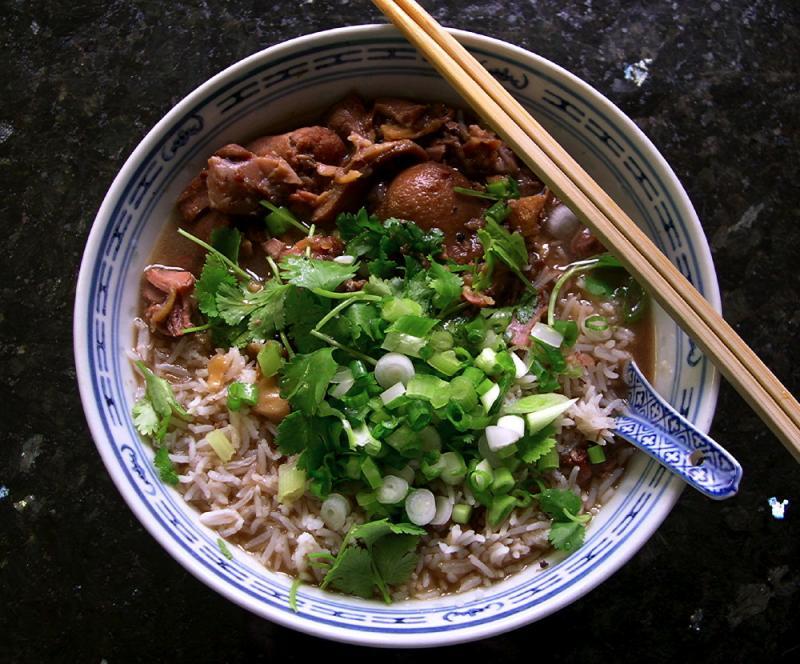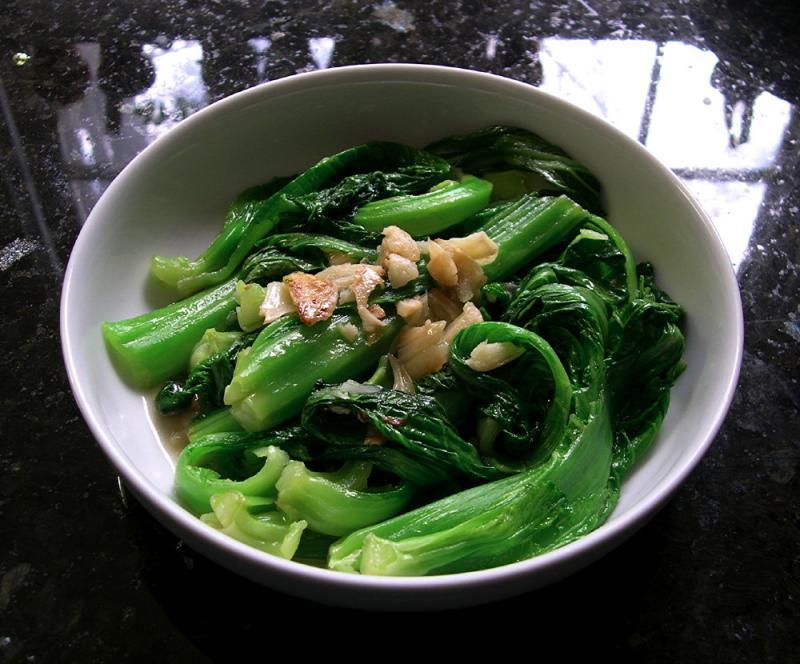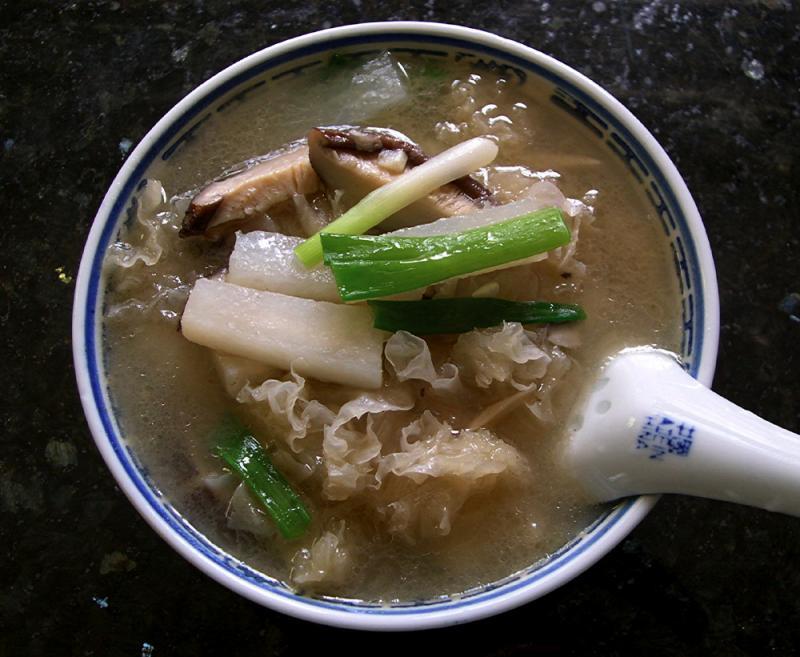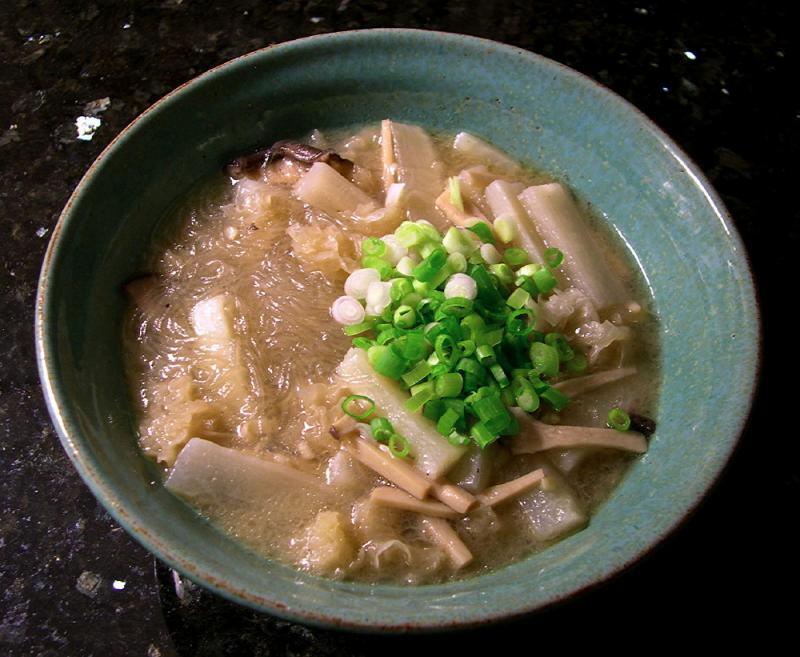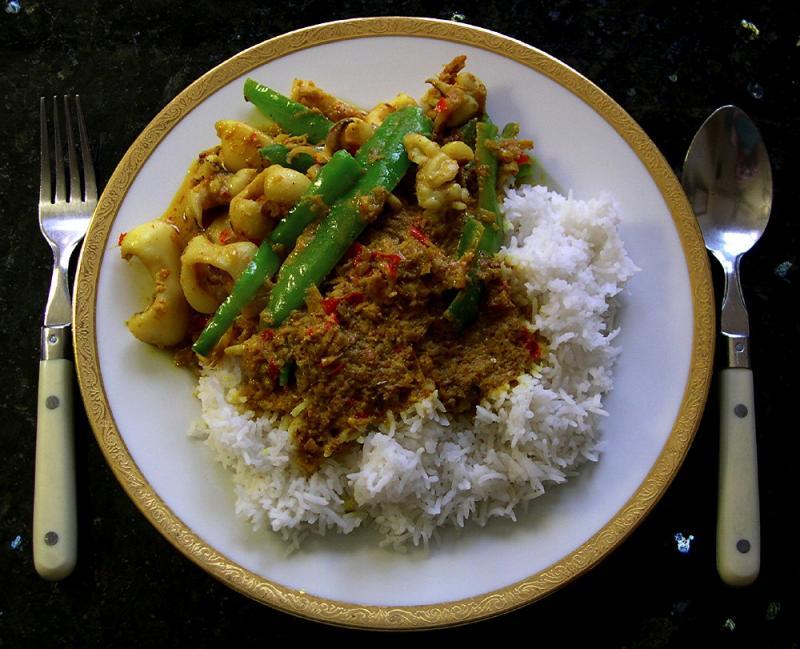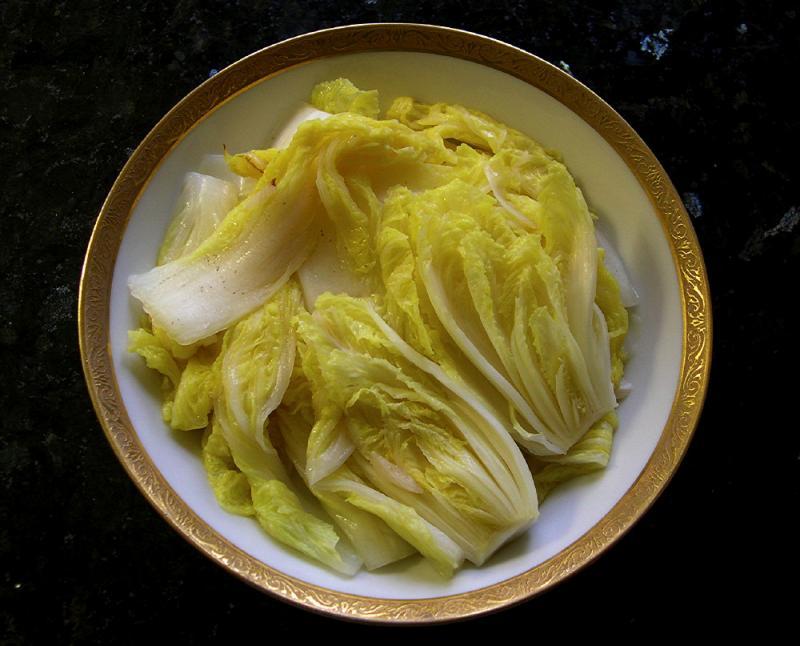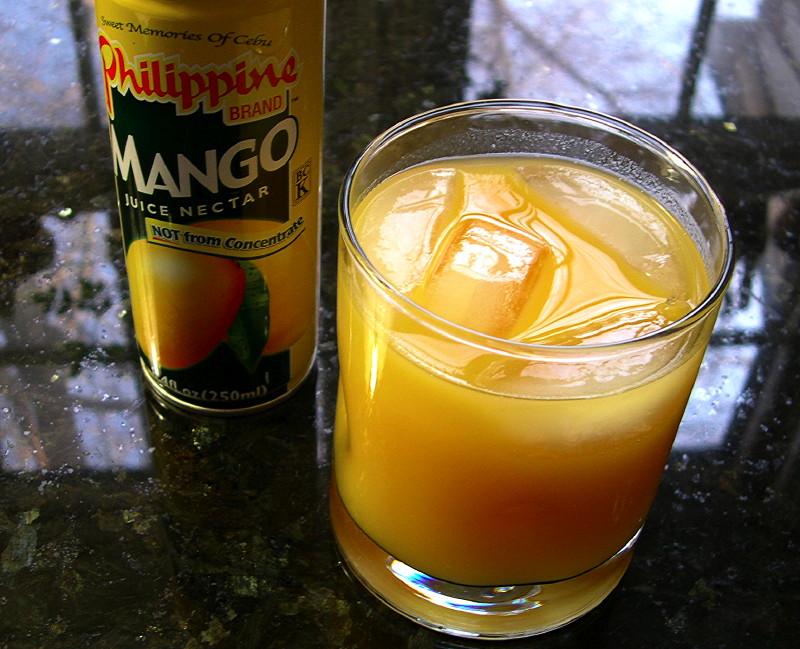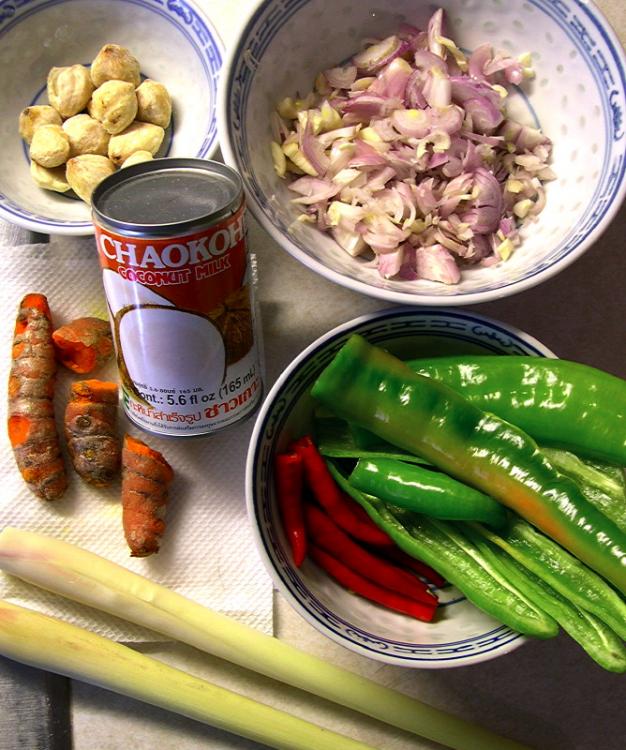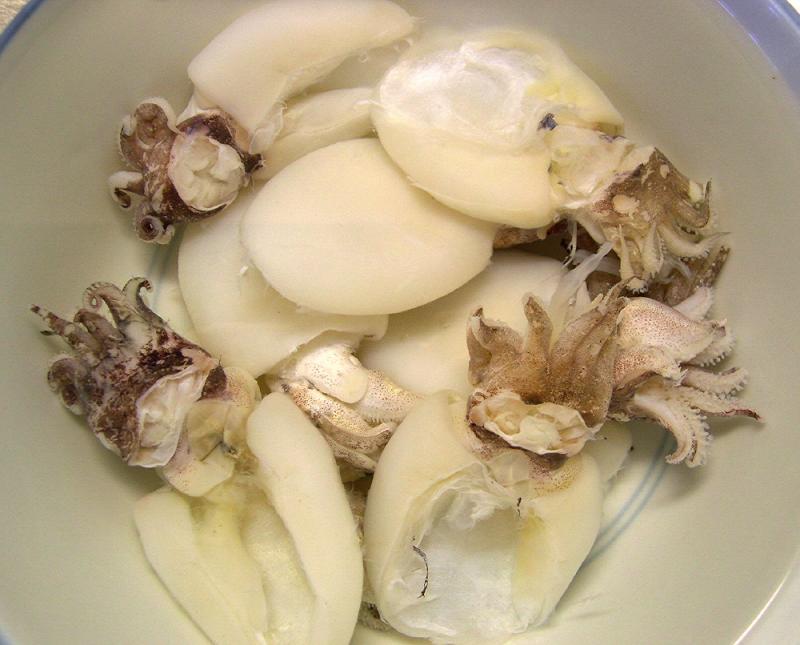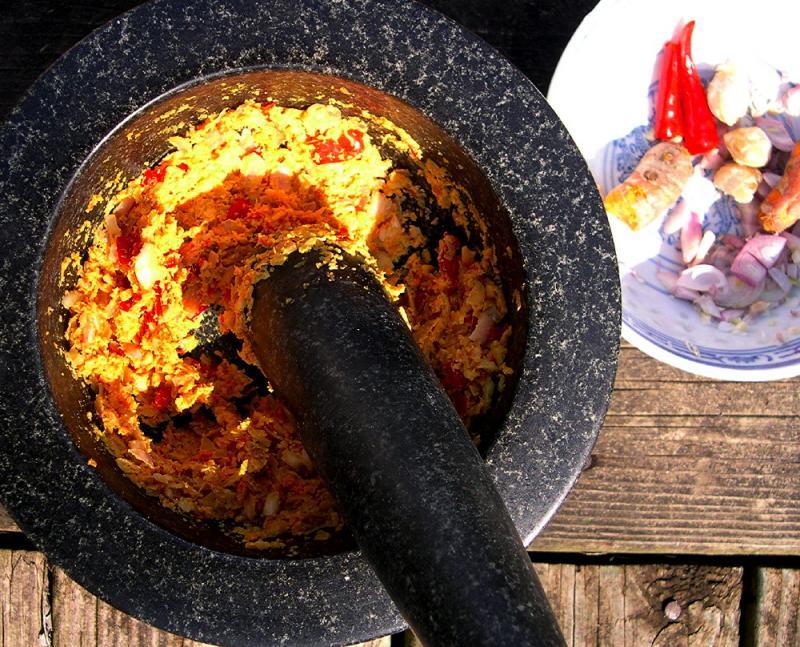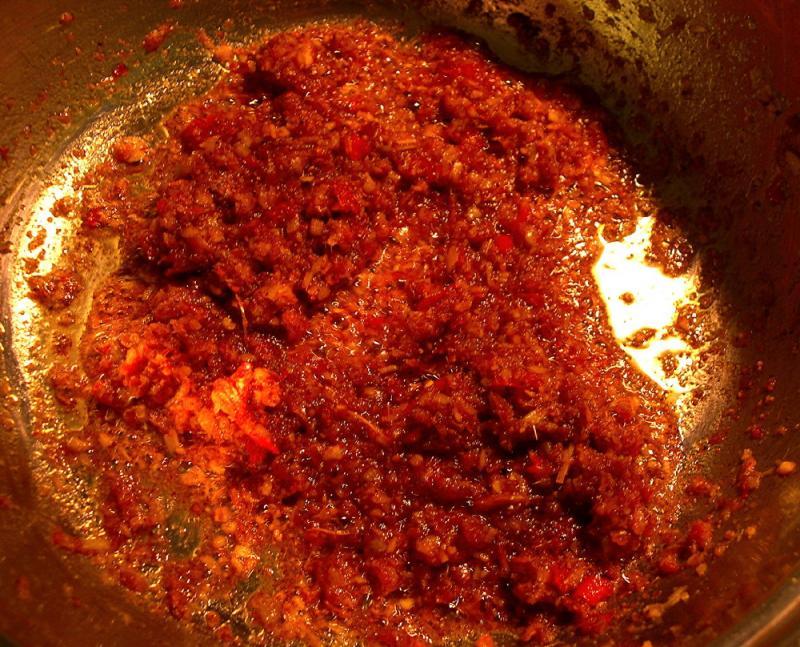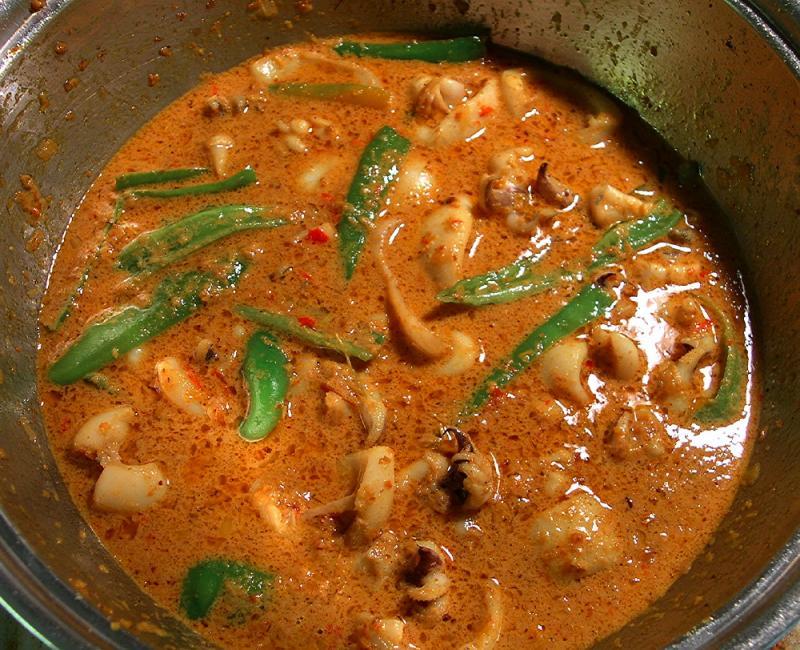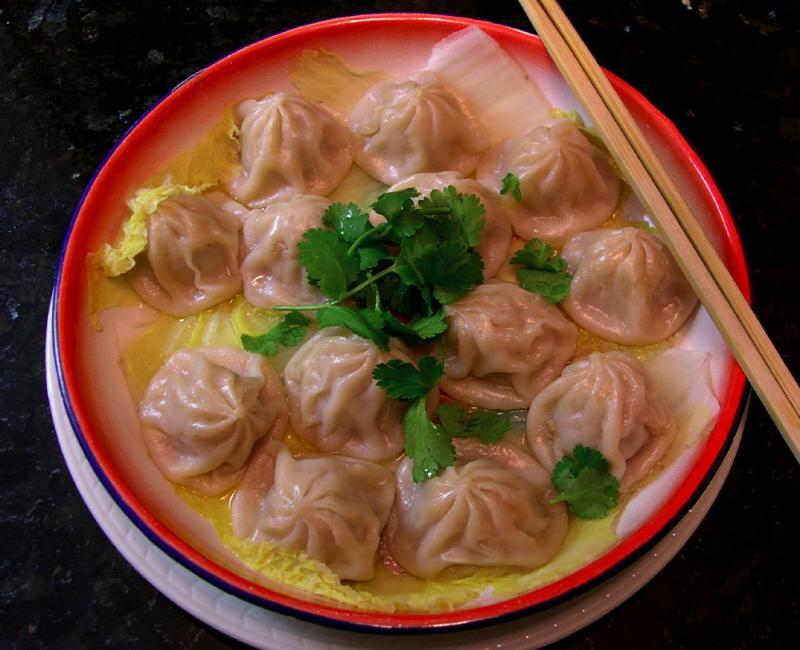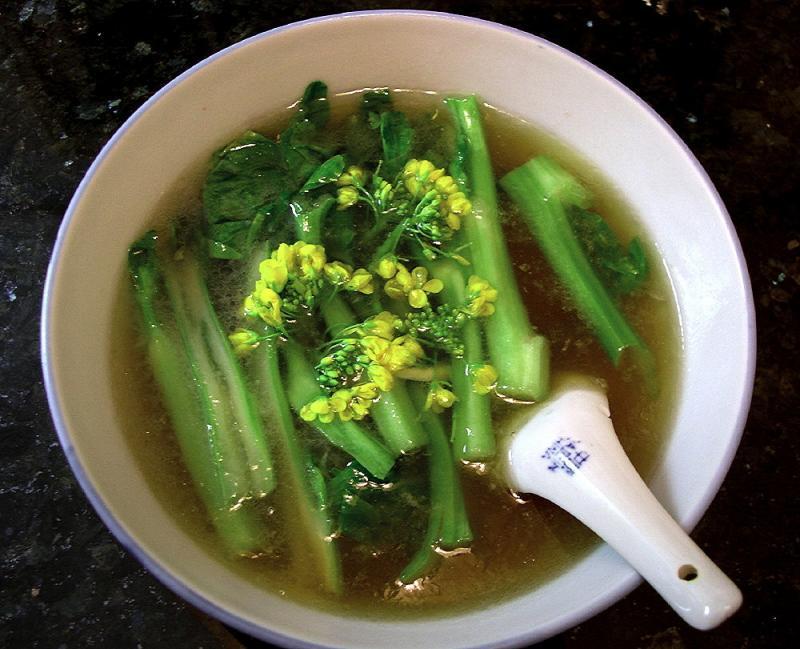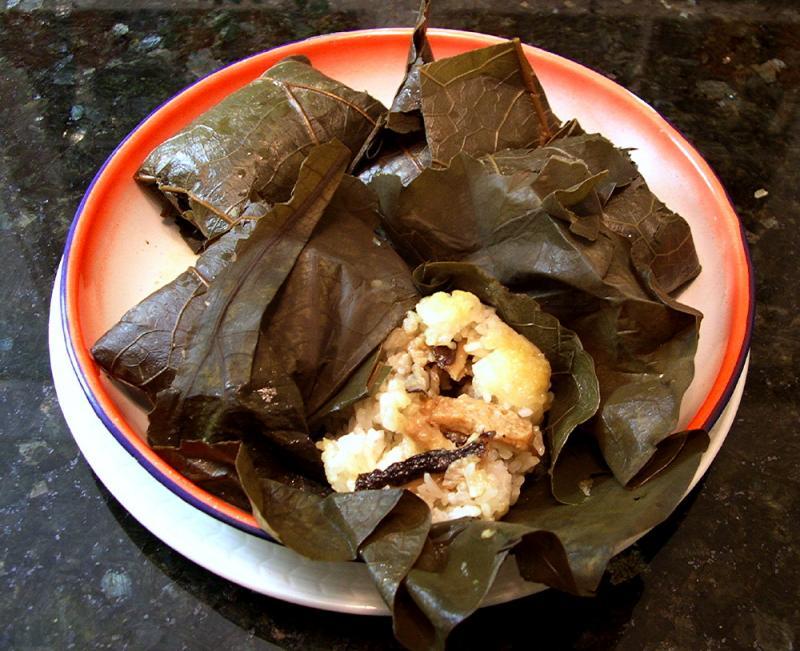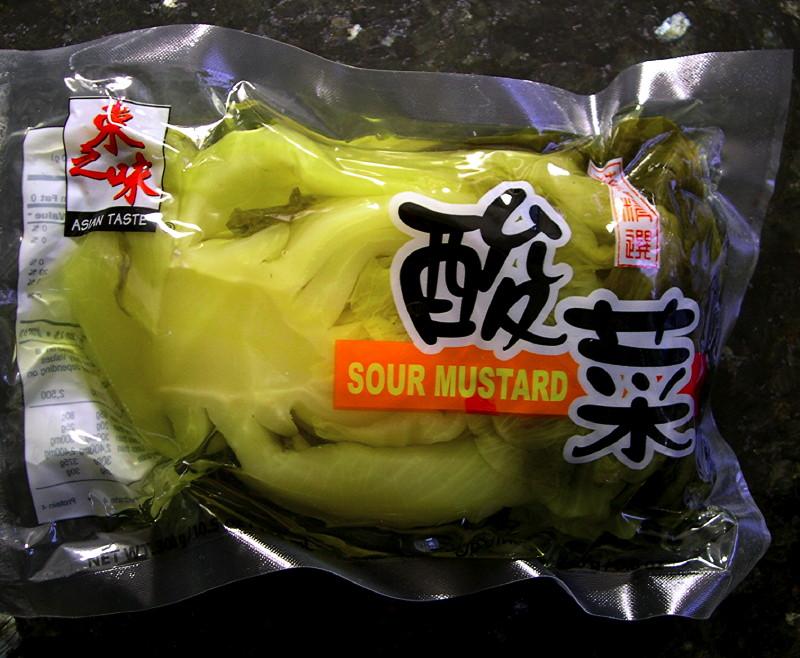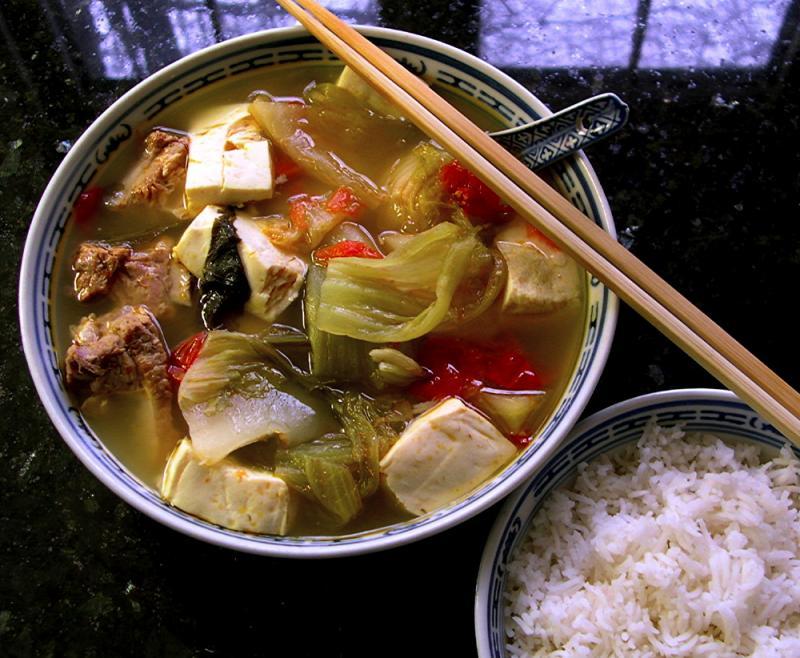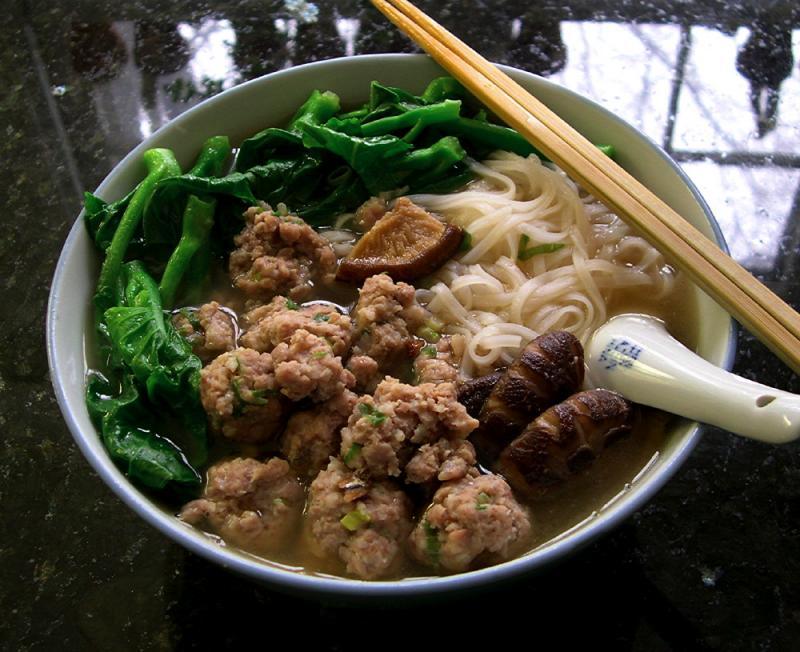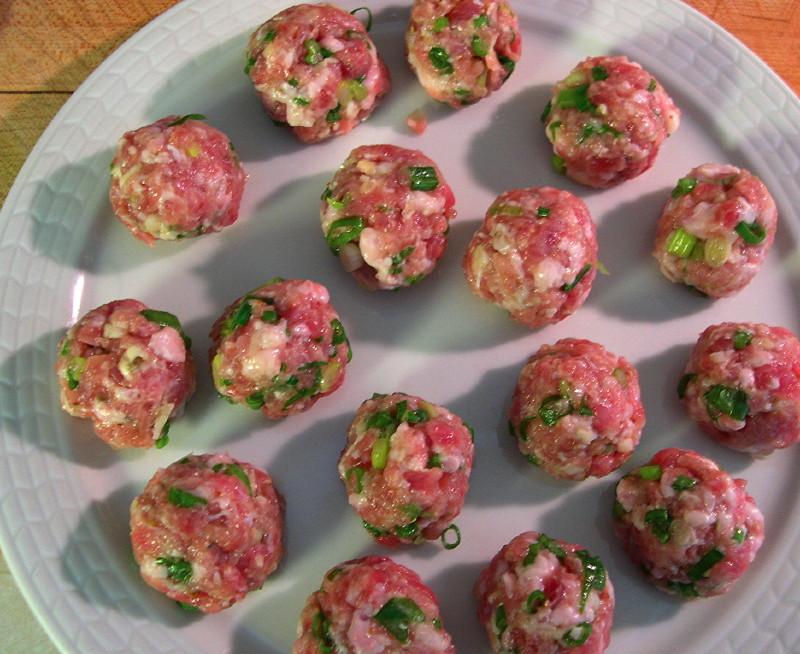-
Posts
3,810 -
Joined
-
Last visited
Content Type
Profiles
Forums
Store
Help Articles
Everything posted by huiray
-
C. sapidus, your spaghetti breakfast looks marvelous and very tasty. I'd like that. Heh, yes, my breakfasts encompass any kind of food that I might feel like having. I personally don't feel the need to have some form of an egg dish to be involved for it to be "breakfast". It is simply a meal (of any kind of food) in the early part of the day, after "breaking the fast" of sleeping away those intervening hours, or even not as the case may be if one has been up all night. ETA: In fact, I've had yummy breakfasts of leftover pasta w/ "meat sauce" in the morning before on many occasions. "Meat sauce" might be something with a vague inspiration of "Bolognese" or not as the case may be; it might involve a "meat sauce" redolent with cinnamon and cloves and star anise; or oregano and thyme; or etc etc... Certainly in many parts of the world "breakfast" would encompass LOTS of foods that would be frowned upon by folks that consider the meal to require only certain preparations involving eggs and that stuff involving said non-delicate-egg-stuff are NOT palatable for their tastes. Heh.
-
Some interesting comments in the eater.com post on this: http://eater.com/archives/2013/03/18/here-are-the-2013-james-beard-awards-finalists.php Regarding Alan Richman - he won last year for the "Craig Claiborne Distinguished Restaurant Review Award" in the "Journalism" section. I confess I don't read him much or follow his career - but could it be the case (or not?) that he did not do anything really significant in the other categories under "Journalism" (or other broad sections) in which he has NOT already won an award? After all, it is supposed to be the case that once someone has won a JB award in a particular category they can never win that same award again - so it would be pointless to even nominate that person for any of the categories in which they have previously won? ETA: From 2008 forwards, that is. See the "Eligibility" section here: http://jamesbeard.starchefs.com/awards/vote/rules.php
-
Hmm. Yet it seems from the various reports about the troubles that TA has that at least some owners think some bad reviews were from folks who had never stepped foot in their establishments, at least at the claimed times the reviews related to. Hmmm indeed. What's your point? That at least some of those reviewers might have LIED about having eaten/stayed at the place they reviewed.
-
• Leftovers from the braised pork hocks - I changed the taste profile a bit by adding more soy sauce [Pearl River superior light] and some Shaohsing wine and reducing the sauce somewhat. Eaten with white rice (Basmati) with generous chopped scallions & cilantro, which also further alters the taste profile. • Simple stir-fried "pull mustard" ["雪裡紅" (Yale: syut3 leui5 hung4); a form of Brassica juncea. (See here also and the Google Translation)] with lots of smashed garlic & sea salt.
-
Hmm. Yet it seems from the various reports about the troubles that TA has that at least some owners think some bad reviews were from folks who had never stepped foot in their establishments, at least at the claimed times the reviews related to.
-
Bravo, Sir. Heh, I dare say that many of those reviewers who rated that sportsbar as the tops might (note I'm not saying "will") rate a place like Alinea in Chicago or Le Bernardin in NYC poorly ... they might simply not care for the kind of stuff that Alinea et al puts out, with all the high-falutin' stuff they do ... etc etc ... while foodies and people who wouldn't let anything but the freshest truffles and the best caviar on just-made blinis cross their lips would curl those same lips at the very notion of cheese nachos in, horrors! a sportsbar!! Then again those cheese nachos may be the very best of its kind - if one were interested in that dish; while those blinis may be just nasty and greasy, even if freshly made in some fancy place. --------- In a more general sense, certainly for my personal taste the ratings given by the local diners in any one place may not agree with my own - but I need then to remember what the "local tastes" run towards - and if I don't, and am new in town, then I will find out soon! In my location certain places like PF Changs, for example, is rated very highly for Chinese food - but I know that that is because of the preference for Americanized Chinese food in a certain kind of surrounding. A particular Szechuanese place is rated as only mediocre - and, yes, gfweb, this is where reading the reviews do matter - most of the reviewers are eating the weekday buffet only; whereas the weekend buffet is pretty "traditional" with all the sorts of stuff that most white folks would find disgusting or challenging and which only ONE reviewer noted, while ordering from the Chinese menu (it is translated into English too) one will get pretty traditional Szechuanese dishes prepared fairly well. (Yes, I've eaten there on weekdays and on weekends) Then, various Italian places get very high ratings locally - but again I know the local clientele loves high salt and copious amounts of cheese on everything in sight and the restaurant obliges them in that. And so it goes.
-
As far as I can tell, the Google listings for a place WILL tell you what sort of place it is . You just need to go to the "more info" page. You would be on that page anyway if you are reading the individual reviews, wouldn't you? Under the name of the place would be the address; and under that the number of dollar signs (how expensive the place is) plus the hours of operation and what sort/type of place it is; and under that is usually a brief further description of the place within quotation marks. Even without the quotation-marks description just the number of dollar signs and the type of place it is should tell you the designated "level" of the place, if it is that casual cheap lunch bistro or a high-falutin' place. If one does come across an entry devoid of all this info (I haven't seen one like that so far) then surely it becomes incumbent on one to call the place or google the place using the general google search engine? In any case, when I use Google maps to locate restaurants in a town or city or wherever, I don't usually just just type in "restaurants" in the search box. I tend to try to narrow them down by typing in "Chinese restaurants" or "sportsbars" or "brewery" or whatever I feel like having or eating that day or night.
-
I presume you tossed in dried shiitakes into the pot when making the stock, not that they are dried shiitakes after making the stock. :-) [They should certainly be hydrated and swollen after making the stock, heh] How long did you simmer the stock for - do the now-hydrated still have much flavor left in them, as Plantes wonders? I've kept a few of the shiitakes when making similar stocks (and sliced them to use for the immediate bowl(s) of whatever I was making) but usually I toss the remaining shiitakes. Of course, when making soups and braises with shiitakes in them meant to be eaten with the other stuff that would be a different issue.
-
Yet one can also read the individual reviews (all of them are posted) on Google. Yes, they're there. They're on the "more info" page for any of the restaurants shown on the main google map page. It's the same as reading the individual reviews on TripAdvisor or Yelp [why hasn't this one been mentioned yet? :-) ] or Urbanspoon or other sites and judging the worth of the reviews. Google also links to these other reviews at the bottom of the "more info" page. As for TripAdvisor, hasn't the site had (and still has) serious problems? It's also supposedly better for hotel info and patchy for restaurant info. https://www.google.com/search?q=tripadvisor+problems&ie=utf-8&oe=utf-8&aq=t&rls=org.mozilla:en-US:official&client=firefox-a http://www.telegraph.co.uk/travel/travelnews/9160472/TripAdvisor-under-fire-over-fraud-detection.html (...and Yelp has issues of its own too...besides the usual mutterings about the competence of the amateur reviewers, just like other sites... http://www.eastbayexpress.com/oakland/yelp-extortion-allegations-stack-up/Content?oid=1176984 )
-
Lunch on Sunday (but see also‡ further below): • Daikon, King oyster mushroom, snow fungus, thick-cap shiitake ("far koo" type) mushroom & scallion soup; in a pork bone stock.¶ ‡ • Slow-braised pork hock slices.† • White rice (Basmati). ¶Stock from about 2 1/2 lbs pork thigh & knuckle bones, w/ marrow & some flesh on the bones + water + salt. All the stock went into the soup. The King oyster was sliced into sticks. The snow fungus was rehydrated first then the hard base removed and the fronds broken into chunks. The "far koo" was de-stemmed, soaked & sliced vertically. †Thick-cut Pork hock slices browned in veggie oil then slow-braised (water) w/ lots and lots of smashed fresh ginger, cinnamon sticks, star anise, very generous rice vinegar (both Marukan & Kong Yen used), some Chinkiang vinegar (Jiangsu Hengshun), splash of "aged soy sauce" (Wei Chuan), sea salt, a few good dashes of Maggi sauce [German], adequate rock sugar. Cooked till pork & skin was falling-apart soft & braising liquid had been reduced to a nice sauce, about 2 1/2 to 3 hrs. ‡ The leftovers of the soup from lunch were boosted w/ a bundle of glass noodles ("fun see"; 粉絲) for a late night meal:
-
Another early A.M. breakfast - fried rice w/ sliced "Vietnamese style"¶ lap cheong [Prime Food], chopped scallions, chopped de-stringed Western celery, eggs scrambled in situ. Eaten w/ pickled chopped long hot green chillies & Lingham's Thai Hot Sauce. --------- ¶ Labeled as "with Mei Kwe Lu Flavor"‡§ but the list of ingredients shows that the flavoring ingredient is Fen Chiew, called on the list as "Gin" ("Distilled from 80% sorghum, 3% wheat, 4% rice, 5% peas, 8% white sugar; ALC 53% VOL") - and presumably "Fen Chiew" is "汾酒" which is a grain alcohol, more commonly described as a "vodka" of sorts. ‡ The Vietnamese name on the package (Lạp Xưởng Mai Quế Lộ), so far as I can discover, suggests that it could be cinnamon flavored (?) - but I can't detect any cinnamon smell or flavor in it. Interestingly, one reviewer of one brand of "fen chiew" noted that the taste had cinnamon notes - to him, anyway...perhaps that might be a possible link? (comments from Vietnamese speakers welcome!) § The Chinese name on the package is "越式玫瑰露臘腸" which would mean "Vietnamese-style rose dew/distillate 'lap cheong' " which also conflicts with the list of ingredients (no rose extracts listed) (but the package containing the sausages is rose-colored, though) Perhaps a fanciful "transliteration" of the Vietnamese into Chinese? (Speculating) (The Yale Cantonese for the Chinese would be yut6 sik1 mui4 gwai3 lou6 laap6 cheung4). Whatever. This package of 'lap cheong' provided me with some enjoyable head-scratching.
-
Are the leaves on your plant wavy-edged and dark green? Or entirely straight-edged, more pointy and (a lighter) green? What does the fruit stalk look like at the point of attachment to the fruit body? Size of fruit? (you might want to confirm that the size of the fruit you have corresponds to Laurus nobilis fruit; I wonder if water availability or subspecies might affect fruit size) Some additional links: http://www.clovegarden.com/ingred/laurel.html#bay http://plants.usda.gov/java/profile?symbol=LANO80 http://calphotos.berkeley.edu/cgi/img_query?query_src=photos_index&where-taxon=Laurus+nobilis http://plants.usda.gov/java/profile?symbol=UMCA http://calphotos.berkeley.edu/cgi/img_query?query_src=photos_index&where-taxon=Umbellularia+californica
-
But - you still haven't told us what the really great secret to roast chicken is - and that's what kind of bird you're roasting. So please - let us in on that. This is true, but I am not sure it means what you think it does, at least if you are using it in conjunction with your recommended brand. While the way a chicken is raised, pasture, free range, in a little pen, has something to do with it, and the feed also has something to do with it, they give rather marginal improvements over supermarket chicken. Processing can also vary, and can add a bit better flavor and much better texture. Still, what is more important, and virtually overlooked, is the breeding stock. We don't overlook it w/r/t other animals, but with chickens the vast majority of expensive, hipster, pastured chickens are still Cornish Cross, which means fat breasts, skinny legs and not a lot of flavor. You can see that in the pictures in this thread, and in almost every other picture you see of an egullet chicken. What you want to look for is Freedom Ranger stock, which is what the Label Rouge producers in France use. It gives a very different chicken. They grow much more slowly, so they are mature at slaughter and developed in taste. The breasts are skinny, the French woman as compared to the busty American archetype. So yeah, chicken matters, but you have to choose the differences that matter for flavor. In SE Asia (e.g. Malaysia, but not so much Singapore) the common chicken used for, e.g., "Hainanese Chicken Rice" and also commonly available in the markets is what is called "Ayam Kampong" (or Ayam Kampung) (in Malaysia), meaning "Village Chicken". They're yellow-skinned chickens with a great flavor and firm flesh. The chickens commonly available in Singapore, OTOH, tend to lean more towards the "Bresse-type" or something-like-that and are paler and more mushy in texture, more like many Western breeds - which, apparently, Singaporeans prefer in a general sense. Keith_W, you ought to know exactly what I am talking about.
-
Good to see you here, theminx. Didn't know you were a participant here too.
-
I wonder how sour sour mustard is? And how mustardy? I've never seen it before. Plantes Vertes, That "sour mustard" is not that sour (to me, anyway) and is also somewhat salty ["Harm Choy" actually means "salty vegetable" in Cantonese].¶ (I suppose one could call the soup I made "Syun Choy Tong" instead, heh.) Mustardy? Depends on what one considers "mustardy" and in any case it would be tempered by the pickling process anyway. I would consider it almost "gone". One does not use it straight out of the bag (or barrel), it is always soaked and rinsed. Some may do it briefly, some may do it for longer . The vegetable is a form of mustard, Brassica juncea, with the variety/subvariety typically used to make "Harm Choy" known as "Gai Choy" (or "Kai Choy") [芥菜 (the broader-leaved ones, not the spiky/narrow ones); Cantonese Yale: gaai3 choi3] in the fresh (unpickled) state. It can be used as a veggie in stir fries or in steamed dishes too. In the soup I made, one can use meat of one's choice, bone-on or not, but I usually use poultry or pork. Meatballs too. Some links for your info: http://www.recipies.50webs.com/Harm%20Choy.htm http://babeinthecitykl.blogspot.com/2008/04/harm-choy-tong-pickled-mustard-cabbage.html http://www.flickr.com/photos/babeinthecitykl/2415827388/ http://portfotolio.net/babeinthecitykl/album/72157625112465362 http://kuali.com/recipes/view.aspx?r=4289 http://www.flickr.com/photos/babeinthecitykl/2889696872/ http://ipohecho.com.my/v2/2012/10/01/fish-head-noodles/ http://www.noobcook.com/teochew-steamed-fish/ http://www.smokywok.com/2011/10/teoch... In the last two, "salted vegetables" is "harm choy". A couple selected posts here on eGullet where I've also used "Harm Choy": http://forums.egullet.org/topic/143989-lunch-whatd-ya-have-2012/page-2#entry1903429 http://forums.egullet.org/topic/144595-the-soup-topic-20072012/page-17#entry1901252 One person's way of making "Harm Choy": http://www.recipies.50webs.com/Harm%20Choy.htm Some other forms of Chinese "mustard greens" commonly grown: http://www.evergreenseeds.com/ormusgreen.html ¶ The Chinese characters on the package pictured are indeed for "Sour Vegetable": 酸菜 (Yale: syun1 choi3)
-
You might want to be careful if you eat parboiled "intact" squid. (Some folks do)
-
Late lunch today, Thursday: • Trimmed cuttlefish (seppia) in a fresh turmeric - “rempah” - fresh Thai chillies - etc sauce.¶ • “Wong Nga Pak” (Napa cabbage) hearts stir-fried w/ garlic. • White rice (“Royal” brand Basmati). • “Phillipine” brand mango juice on ice. ¶Ingredients list: Trimmed & cleaned cuttlefish, peanut oil, vegetable oil, fresh turmeric, shallots, garlic, fresh lemongrass, “buah keras” (Candlenuts), Thai chillies (partly deseeded), hot long green chillies (partley deseeded), chilli powder, coconut milk, light soy sauce (Pearl River Superior), “gula melaka” (palm sugar), salt. Pics of stages of the prep of the cuttlefish dish:
-
An early breakfast today: • Pork & Crab "Siu2 Lung4 Tong1 Baau1" (小籠湯包) (xiaolongbao) [Wei Chuan], steamed on Napa cabbage leaves • Taiwan "Choy Sum" in pork stock soup. • Steamed glutinous rice w/ pork & shiitake mushroom filling, wrapped in lotus leaves. [Commercial]
-
Growth of large indoor farms in Chicago: http://news.yahoo.com/chicago-suburb-indoor-farm-goes-062525036.html http://farmedhere.com/ http://chicago.cityandpress.com/node/6061056 http://article.wn.com/view/2013/03/28/Mega_Indoor_Vertical_Farm_Chicago_Suburb_New_Home_To_Nations/#/related_news http://www.chicagotalks.org/2011/01/04/growing-up-vertical-farming-takes-root-in-chicago/ An article that includes such farming elsewhere including in Brooklyn, NY (Gotham Greens) ;-) : http://www.terraspheresystems.com/index.php/news-media/19-news-news/41-urban-farming-20-no-soil-no-sun
-
It is Matzo Ball or Matzah Ball? :-) http://www.jewfaq.org/defs/matzahball.htm http://www.myjewishlearning.com/holidays/Jewish_Holidays/Passover/At_Home/Food_and_the_Kitchen/Matzah_Balls.shtml http://www.matzoball.org/ http://www.letmypeoplego.com/theball.html http://en.wikipedia.org/wiki/Matzah_ball http://en.wikipedia.org/wiki/Matzo_Ball
-
BTW crab season in B'more/Maryland opens only on April 1 so depending on when you are in town the "blue crabs" you may get in restaurants (and crab cakes etc) may still be stuff from Texas or the Carolinas or elsewhere (frozen E/SE Asian etc crabmeat). You might get some local soft shell crabs early...you should ask clearly about where the crabs on the menu are from, if that is of importance to you.
-
A pack of that sour (pickled) mustard. Other brands are available at other times, often several at the same time. Traditionally, this veggie was made and "stored" in barrels and in some Chinatowns in North America that can be offered by some stores. (Or in big tubs, nowadays, instead of the barrels) I get my stuff from my local Chinese grocery, no barrels of it around.
-
Late lunch Tuesday: "Harm Choy Tong" (Pickled sour mustard soup) with pork spare ribs, tomatoes (Cherub), sliced ginger, halved garlic cloves, soft tofu slices; plus some rice vinegar.¶ Salt to taste. Eaten w/ white rice. ("Royal" brand Basmati) ¶The sour mustard (commercial; "Asian Taste" brand) was soaked in running cold water for a bit, squeezed of excess water then trimmed and cut up. Sliced fresh ginger & halved garlic cloves were sautéed in veggie oil, short-cut pork spare ribs (cut into individual riblets) added and the mix sautéed for a bot, salt added, then enough water and the mix simmered for about ~ 20 min or so. The trimmed soaked mustard was added plus halved Cherub tomatoes plus a good splash of rice vinegar (Marukan). After simmering for ~1 hr sliced soaked soft tofu was added and simmering resumed for ~ 5-10 min then the heat turned off.
-
The Inner Harbor in Baltimore has many decent places but be warned that it is somewhat touristy (of course). Since you're staying at the Baltimore Marriott Waterfront you will be close to Little Italy as some here have basically conveyed to you. Amongst the restaurants there, AVOID Ciao Bella. There is a lovely bakery (Vaccaro's Italian Pastry Shop) in Little Italy which has quite nice stuff and would also afford you a "late night" dessert & cappucino soirée. (It's quite popular too) On the waterfront just around the corner from you both Cingiale (modern Italian) and Charleston (American) are very good but will not be inexpensive. How long will you be there? Will you have a car? The good Pit Beef places (by definition IMO "Pit Beef" only means the sort you get in Baltimore) are not anywhere near downtown B'more. Chaps (mentioned on this thread) (...aannnd right next to a strip joint with a REALLY HIGH sign) is out on the Eastern periphery of town, for example. Other places for good Pit Beef will need a car. Lexington Market (also mentioned here) is on the Western side of the downtown area and can be, uhh, colorful. DO NOT wave your cell phone in the air [it has been known in the past for folks passing by to literally snatch your phone out of your hands and disappear into the crowd] or be careless about your personal effects (or your car, in the parking lot there). If you're in luck, you might also see a drug deal or a gun transaction go down within your eyeshot. ;-). I can't say I'm too fond of Faidley's Crab Cakes - even the premium ones (there are a few grades available). They're fine, and pretty good,but not the "best" around, IMO, notwithstanding their extravagant claims to fame and their signage attesting to same which are more than a decade old. (Their "Maryland Crab Soup" is another utter dud, BTW) Nevertheless, the Market is a very interesting place to wander through. Just be aware of your surroundings.
-
Lunch Monday: Pork & scallion meatballs§; in a pork stock¶ with baby veggie tips (“菜苗”) & bánh phở. § Minced pork, finely chopped scallions & finely chopped smashed garlic marinated w/ sesame oil [Dragonfly], Shaohsing wine [Wei Chuan], sea salt, ground white pepper & some tapioca flour [Flying Horse] then formed into balls by hand. ¶ Pork stock simmered w/ dried thick-cap flower-patterned shiitake mushrooms (stems removed & broken into large pieces) & a small handful of dried whole anchovies, then all solids seined from the stock (some of the shiitake mushroom pieces retained) and the pork meatballs put in, simmered, followed by the veggie tips. The bánh phở was cooked separately in water, drained, "bowled"; and the meatballs, veggie & soup/stock added.



